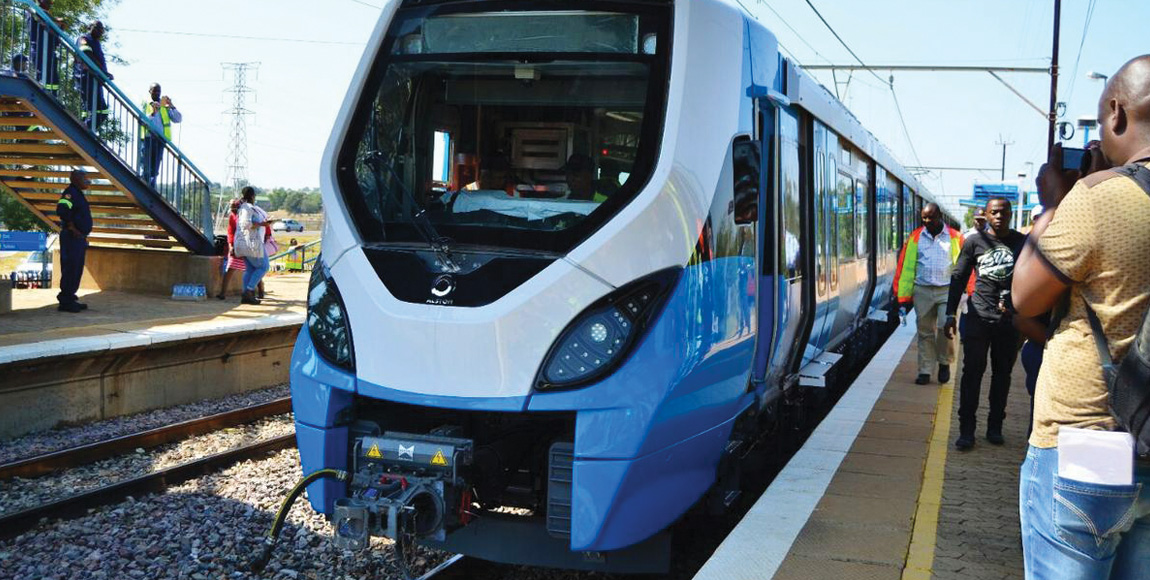Have we learnt anything since 2015?

How did we allow Eskom, SAA and e-tolls to get us into such a mess? We are all partly to blame for our failure to ask questions during the early stages of these grand schemes
Passenger rail is one of my favourite topics. President Ramaphosa recently took some rides on our Passenger Rail Agency of South Africa (Prasa) trains. His first trip, north of Pretoria, took three hours instead of 30 minutes.
On his second trip, in Cape Town, he used a “sparkling new” Blue Train. There, things went more smoothly – Cape premier Helen Zille was also on hand to point out that the DA-run province will “set standards for rail transport and establish a rail inspectorate”.
Business Day of April 10 gushingly reminded us that the “new trains are part of Prasa’s modernisation programme, which includes the manufacture of 7 224 trains in the next 20 years at a cost of R123 billion”.
How can we doggedly stick to this figure of 7 224 coaches? Let’s go back to the July 2015 issue of FOCUS and quote Hopping Off word for word:
“Let’s take a quick look at another potential transport crisis in the making: Prasa’s R123-billion fleet-renewal programme. According to reports, it’s the biggest of its kind in the world, involving 7 224 coaches. Already it is off to a shaky start, with SATAWU calling for the ‘immediate dissolution’ of the Prasa board (Business Day, May 28, 2015).
“How did we get to the overall total of 7 224 coaches? It’s a suspiciously precise number. My guess is that a clerk was told to take the current fleet of, say 3 500 coaches and increase it by, say, one percent a year for the next thirty years. He or she arrived at 7 223,36 and, being a well-trained student of transport economics, correctly rounded it up to 7 224.
“Has any attempt been made to reconcile this figure with any of the regional and/or provincial transport plans? I doubt it. Take Gauteng, which, according to the 25-year Gauteng Transport Plan (GTP), makes up
48 percent of Prasa’s operations in South Africa. The GTP consists of
1 400 pages, of which a miserly 71 pages (Appendix F) are devoted to public transport.
“The six-odd pages involving Prasa mostly refer to expansion into areas not currently served by rail, which will presumably require at least a few hundred extra coaches. There is also a vague reference to ‘rapid rail’ – presumably Gautrain – expansion.
“The GTP then contradicts itself three pages later, on page 69, where it quotes international research showing that population densities in Gauteng are so low that they justify only a ‘basic’ bus service, not even a ‘premium’ – presumably bus rapid transit (BRT) and even less a rail service. Late flash: Appendix F was quietly been taken off the GTP website during June (2015). Why am I not surprised?
“The simple conclusion is: we don’t need rail ‘expansion’, of either the Prasa or Gautrain variety. There is no need for 7 224 new coaches – simply stick with the interim order for 3 600 coaches (which we might not even get), while government needs to immediately start fixing basic bus and taxi transport throughout South Africa.”
When the above was written in 2015, the railway was carrying about 400-million passenger trips a year. It is now down to about 250 million, making the figure of 7 224 coaches even more ridiculous.
I see that the University of the Western Cape (UWC) is looking into the fitness of people to be board members of parastatals. I hope that it pays special attention to the boards of loss-making public transport organisations.
UWC should recommend that all these transport boards be disbanded and replaced by a single authority whose members are required to use public transport daily, and whose remuneration (say 20 percent) should consist of transport vouchers valid on the systems they are supposed to be “managing”.
These board members can give the vouchers to their friends if they can’t use them themselves. We’ll soon find out who is serious about public transport and who isn’t.
If I’m still around in 2023, I hope that I don’t have to copy and paste this column again!
Published by
Vaughan Mostert
focusmagsa




